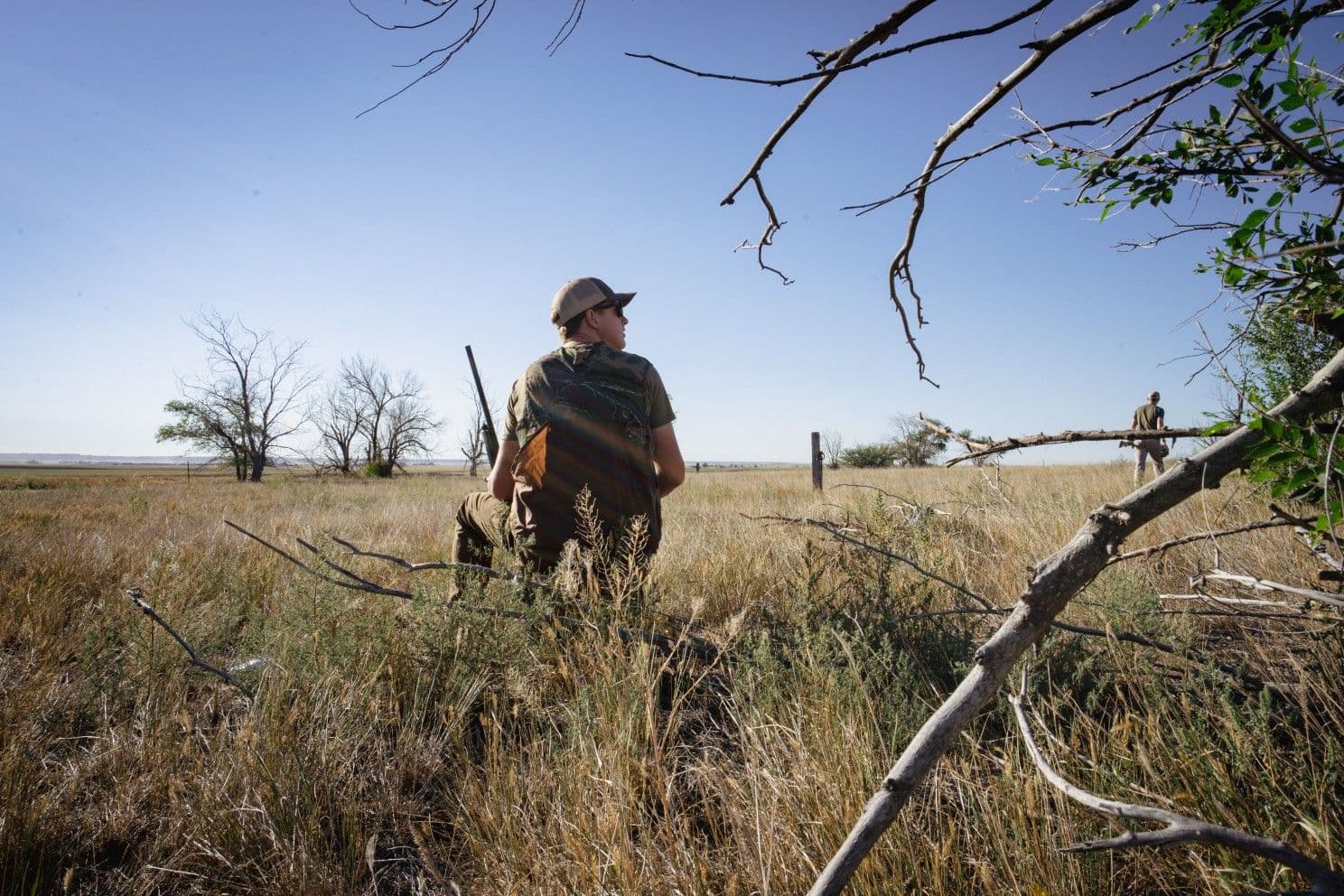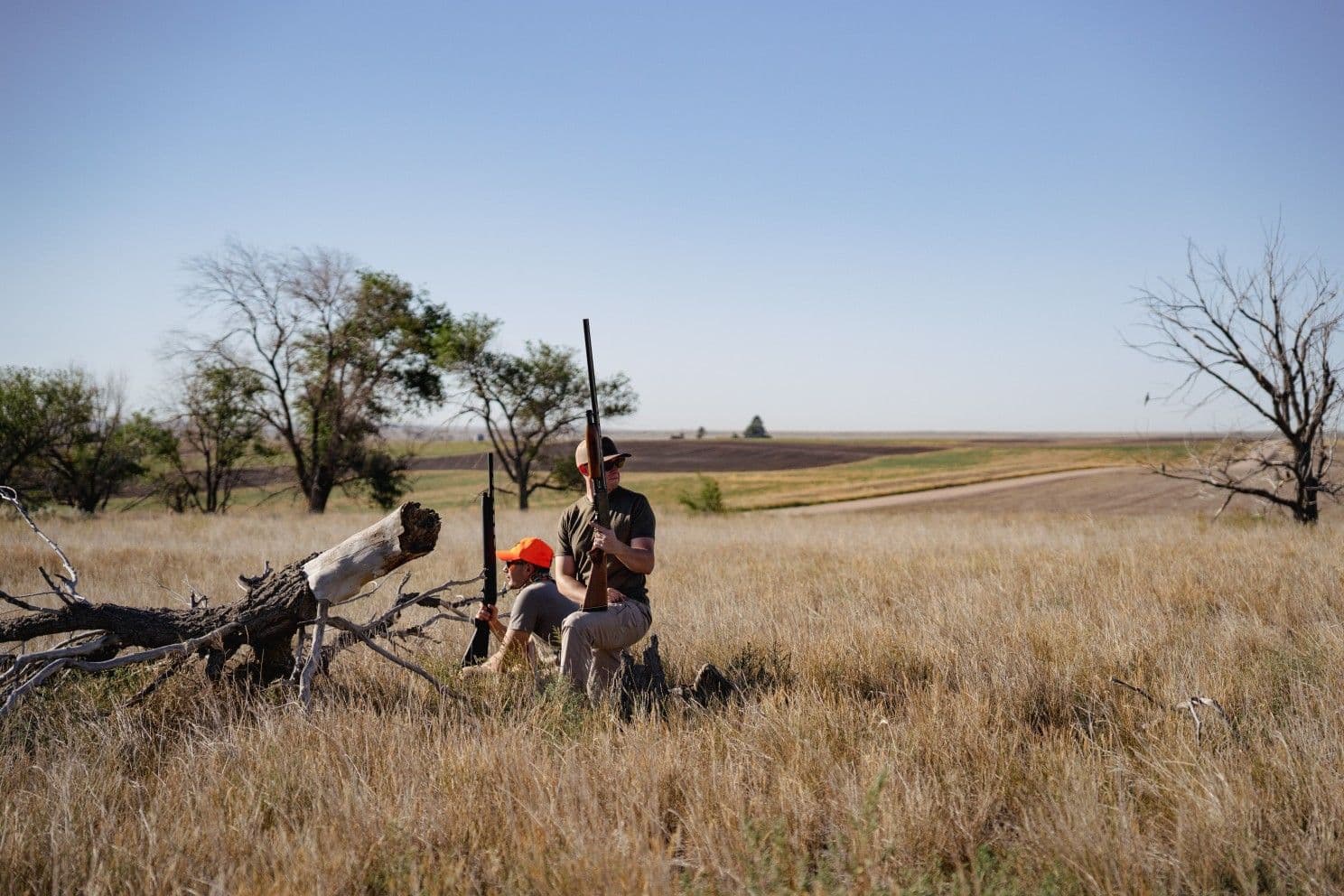Dove Hunt the West


Michael Maroney
09/07/2023
Dove Hunting is open across the country, and that can only mean one thing, September is finally here! For many people, dove hunting signals the start of hunting season. Its a time to dial in your shooting skills, share laughs with all of your hunting buddies, and enjoy the last weeks of warm weather before the fall temperatures take hold. Plus, who doesn't love a dove popper?!
While we have dove properties across the country for users to enjoy, we wanted to give you an insight into how to be successful hunting doves in the west. Dove hunting in the west may not get the same hype as down south, but it can still be fantastic. The western mountains and front range areas see large amounts of doves migrating down during the late summer and early fall each year. There are many days we have experienced where hitting your limit is likely, and good times will certainly be had.
Here at Infinite Outdoors we strive to bring you some of the best dove hunting opportunties around. While we can provide with great access, limit pressure, and work with landowners to improve habitat, we cannot combat the laws of monther nature. We hope that everyone has a great hunt however birds can and will continue their migration, change feeding areas and flight patters throughout the season. For dove season, get out early in the month to help ensure a successful hunt. That cold front will almost always be looming around the second or thrid week of the season and dove hunting quality may be effected.
Here is a quick breakdown of all things dove hunting from us at Infinite Outdoors:

What to expect:
Shells: The first thing many people are underprepared for is the amount of ammo one needs to hunt doves all day or even for a few hours. Doves are small, fast moving targets that often show up in large groups at once. It’s been said that on a national average a hunter will shoot 7 shotgun shells for every 1 dove downed. That can turn into a lot of shots on a good day. It’s never fun to run out of shells and dip into a buddy’s stash, and it is even worse to run out of shells all together while there is still plenty of daylight to hunt and doves to shoot. It’s best to take more shells than you think you’ll need, we recommend always having at least 3-4 boxes per hunt, typically in the 7 ½ to 8 shot sizes.
Temperatures: An important thing that changes year to year is the temperature. Doves prefer warm temperatures and start moving south once the nightly temps drop into the mid to upper 40’s. Throughout the west, this can happen the first week of September, or the last. Always keeping an eye on the weather is crucial to make sure you don’t miss prime dove hunting days before they move out. However, never count out a day chasing doves later in the season if the temperature switches back to hot after a quick cold spell.
Limits: You may encounter several types of doves in the west areas including Morning, Whitewinged, and Eurasian Collared Doves. All have different characteristics and limits. Morning and white winged doves are a smaller size and do not have the distinct black collar around their neck. They have a 15 bird bag limit and 45 bird possession limit. Eurasian collared doves are larger and have a distinct black collar on the back of their neck. They are considered an invasive species and do not have a limit except when counted as part of your mourning or white dove bag limit.
You can check out all the dove hunting regulations and bag limits for Colorado here: chrome-extension://efaidnbmnnnibpcajpcglclefindmkaj/https://cpw.state.co.us/Documents/RulesRegs/Brochure/SmallGameWaterfowl.pdf
Snakes: We are usually hunting doves in areas where snakes can be present, including Prairie Rattlesnakes. Always be mindful of where you are stepping and set up so you don’t have an unwanted encounter. If you are hunting with a dog, make sure to keep them out of large brush piles or other areas where snakes may be hanging out. Always know where the closest vet is in case they do have an unfortunate run in with a rattlesnake.
Setup:
Where to set up: There are multiple ways to approach dove hunting which all depends on personal preference or location of your hunt. We often have luck sitting near roost trees like Russian Olives or cedars, walking tree rows, sitting near food sources or fallowed agriculutre fields, or sitting near water sources.
We like to spend our morning dove hunts next to a food source when doves fly in for the first eating time of the day. Doves love seeds from any source so finding a place where doves will be flying in to feed in the morning is a safe bet.
In the evening, sitting somewhere near a water source where the doves will be visiting can be extremely successful. Finding a water source that has at least a couple of feet of bare dirt surrounding it is preferred by doves. If there are trees close by that can make things even better.
What to bring: If you are going to be sitting anywhere, whether it's near a tree row or in tall sunflowers, decoys are a good idea to have set up in the area and a very useful tool. Both stationary and motion decoys work great on doves and are easy to carry. Another useful tool to have while sitting is a good ole bucket. A fancy one with a swivel top is great but a typical 5 gallon bucket works as well. Being able to take something to sit on that is portable and also doubles as a place to carry gear and ammo saves time and energy. We recommend wearing at least a camo shirt to help conceal yourself from the doves but it's never a bad idea to throw on an orange hat to make sure other hunters know where you are. Things can get hectic when birds start coming in and other hunters may be hard to see when wearing camo. It can be hot during dove season so don’t forget to always throw a water bottle or two in your bucket before heading out.
Field dressing and Cooking:
Finally after the shooting stops and the sun is setting, it’ll be time to clean your birds. There are many ways people get doves ready for eating; removing the entire beasts of the dove connected to one wing is a popular and quick route. This is also the best route to take if you want to clean them in the field and transport them back home legally. Other people like to completely pluck and dress the entire dove to be able to cook it as if it were a miniature rotisserie chicken. And then there is fileting of each individual breast. If you haven’t tried the filet method, it is easier when you have a group of hunters and can do an assembly line for removing skin and onto fileting the breast meat.
While small in stature, dove is a delicious stand alone or addition to any meal. If it is filet it is easy to bread and make into nuggets which pair well with any dipping sauce. Dove Poppers are the go to for most. Easy to prep and cook, you can have poppers ready to eat within an hour of getting home from your dove hunt. Here is a great recipe option if you are looking to mix up your dove cookout this fall. https://infiniteoutdoorsusa.com/blog/best_new_dove_recipe
Bottom line is that dove hunting is just the start of all that fall has in store for us and we couldn’t be more excited. Infinite Outdoors wants to wish everyone the best of luck on their dove hunts this September. If you are looking for private land to hunt, click here to check out any of our 30+ available dove properties that are open all month long!
